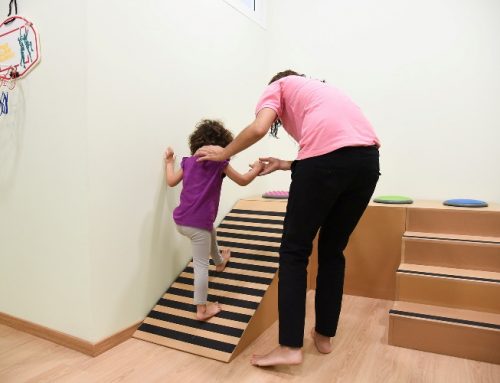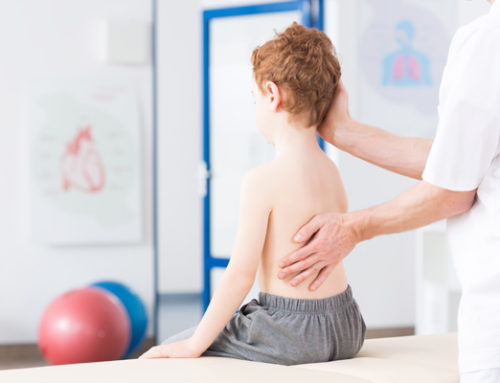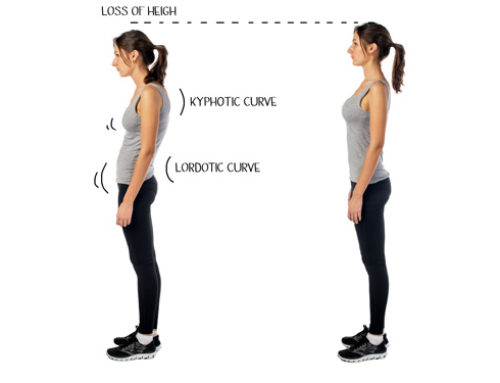Speech therapy approach
When, during pregnancy, childbirth, or early childhood a brain injury is caused, it may create movement disorders (major clinical feature), while symptoms such as disturbances in mental abilities, emotional development, speech and sensory (Walton, 1993).This group of nerve disorders called cerebral palsy, and not because we are talking of complete paralysis of the muscles, but disturbed coordination thereof .
A more appropriate term for cerebral palsy, according to Walton (1993),refers to a group of permanent but changing neural disorders of movement and posture, due to non-progressive disorder of the immature brain.
Cerebral palsyis diverse clinical manifestations, severity and etiology of. The two main types of classifications (general classification and clinical classification), referred to in the types cerebral palsy include:
- Overall classification
Α) spasticity
Observed in 50% -70% of cases and has been associated mainly with lesions of the pyramidal system.It involves high intensity contractions of muscle groups. Hemiplegia, diplegia and quadriplegia referred to aresub-types of spasticity. The main characteristics depending on the extent of damage are:
- Hypertonic
- Restriction of mobility and coordination
- Residual reflexive actions that lead to abnormal motor patterns
- Primitive inhibitory patterns that restrict coordination and lead to stereotyped movements.
In such casesthe voicesoundsmonotonousandshredded. Breathing issuperficial andinterruptedduring the childs speech. Mimingisunerringwhile thetongueis pressedon the teethandthe hingeisspasmodic(Ainalidou, 2001).
b) Athetosis
Includes5%-20% of casesand refers to thetransientinvoluntarymovements (particularly externaltoeupper and lowerlimbs), imposingbizarrepositionsof the body, limbs and face.The intensityof voicealternates between loud and low voice.Breathing isfast or slow, deep or shallow, rangingbetweenpureandblurredwhilewhen miming is observed that children do grimacesobservedfaces.
The maincause of athetosis includes damage of theextrapyramidalsystem.Typesofathetosisaredystonicathetosis, athetosismixedwithspasticity, choreatic athetosisandunmixedathetosis.
Thecharacteristics,depending ontheextent of damageare:
- Usuallyaffects the wholebody, rarelyconfinedto one sideof the body.
- Transientmuscle tone
- Pathologicalsuccessionmovements (Dyskenesia)
- Lack ofskillsmiming
- Asymmetricposture
- Inadequateornon-existenthead support
c) Ataxia
The termataxiarefersto the inabilityof grossmotor coordination.Usually its classified as dull, slow and dysrhythmic. Speech isslow, monotonousandhoarse.Breathing issuperficial andsharp, while themimicks is unerring.
Ataxia is mainly dueto eithercongenital damage or aquiredtothe cerebellumandmeetsthe following types: cerebellarataxia, cerebral ataxiaandspinalataxia.
The mainfeatures are:
- Muscularhypotonia(especially during the first monthsof life).
- Terroranddisymmetria
- Disturbances in balance
- Lack ofmimicking skills
d) Mixed types
In these types, a combination of two or more of types coexist.
- CLINICAL CLASIFFICATION
- Hemiplegia
- Congenitalhemiplegia
- Acquiredhemiplegia
B) CongenitalHemiplegia
- Spasticdiplegia
- Ataxic diplegia
c) Cerebral paralysis
d ) Athetoid Quadriplegia
e) Ataxic cerebral palsy
Maincauses ofcerebralpalsy
The causesmaybe due topre-, peri-andpost-natal complications.
Prenatal causes are the following:
- Intrauterine infectionby viruses,e.g.,rubella virus, syphilis, poliomyelitis, etc.
- Intrauterineasphyxiacanbe caused bypoisoningwith carbon monoxidefromplacentalpathologyetc.
- Intrauterinecerebralhemorrhagemainlydue to injuriesandtoxemiaof pregnancy.
- Metabolicdisordersof the mother,such asdiabetesmellitus, excessive intake ofvitaminD, etc.
- Radiationexposedtothemother duringpregnancy.
The mainperinatalcausesare:
- Perinatalasphyxiacanbe caused byheart attacks, failure orprematuredetachment of theplacenta, to intenseandprolongeduterine contractionsinoutput delayof the headetc.
- Perinatalmechanicalinjurycausingcerebralhemorrhage.
The most commonly observedpostnatalcauses ofcerebralpalsyarethe following:
- Hyperbilirubinemia
- VascularEpisodes
- Infectionssuch asmeningitis
- Hypoglycemia
- Radiation
- Neoplasms
- Injury,poisoning andanoxia.
Diagnosis of cerebral palsy
The diagnosisof cerebralpalsyis an importantfactor in determiningan effectivetreatment.Thefinal diagnosisof cerebralpalsymaybe delayeduntil the endofinfancy (2 years) or moreon, especiallyin preterminfants.
Theneurodevelopmentalexamination (diagnosis) that willmanifestthe disorderis carried outinfourareas, whichare:
- Classical neurological examination: Compriseexaminationtendon, skin reflex,muscle tone, muscle strength, presence of clonus,etc.
- Observationof the infant. Its purpose isto assessthedevelopmental stagesthat mustbe followed by thedevelopmentof infants(eg sitting at7 months). It has been foundfor examplethatin 4 months old infants inabilityto support their elbowsandmaintainsupport(head upright), as well as lack of interestin theenvironmentmay be associatedlargelywith an increasedrisk for cerebralpalsy.
- Testing positions: are a reaction to tendons reflexes, labyrinth, skin and eyesin conjunction withparticular positions. Theseare (1) tractiontests(2)ventralsuspension, (3) axillarytraction.
- Primitive reflexes (reflexes such assucklingand swallowing, biting. majorityof thesedisappearsbetween2 and4 months. When reflexes exist beyondthe accepted age, theyare consideredabnormalandmay indicatethe existence ofcerebralpalsy.
TheCT andMRIarethetwo mostwidely useddetection methodused inclinicalpractice,providingpathologicaldataasevidencefor eachdisorder.
Multidiscipliplinary Approach
Cerebralpalsyisamotor disorderthat is multifaceted. As a result it requires the collaboration and contribution of manyteams of specialistsforthe best possiblerehabilitation. Thus, a multidisciplinaryapproachshould includethe followingdisciplines: pediatrics,neurology, neurosurgery, surgery, orthopedics, physiotherapy, occupational therapy, psychology, speech therapy.
CEREBRAL PALSY AND ASSOCIATED DISORDERS
Often the clinicalpictureof cerebralpalsyis characterized notonly bymotor dysfunctions, butalsocoexistingdisorders inmentalabilities, emotionaldevelopment, speech andsensation. Early assessment and intervention of associated problems helps us avoid misdiagnosis andthusineffectivetreatment.
Some of these impairments include:
- Congenitaldiplegia: A seriouscomplication thatcan occurincongenitalhemiplegiais epilepsy,while in othercasesmental retardation.
- Acquiredhemiplegia: aphasiacan coexistwithasimpledelayin the developmentof speech.
- Spasticdiplegia: Verycommon isthe coexistence ofstrabismusand insmallerpercentagesepilepsy.
- Ataxicdiplegia: In a smallpercentage some degree ofmental retardation can be observed.
- Quadriplegia: Severe mental retardation and microcephaly coexist largely with quadriplegia. Also, spasticity can be observed cranial nerve palsies and epilepsy, in 50 % of cases.
- Athetoid cerebral palsy: children may have borderline mental retardation and a percentage of33 % strabismus. Speech is often disturbed – difficulty in controlling joint- muscle coordination and breathing – phonation.
- Ataxic cerebral palsy : In these cases there is usually no mental retardation
Note: In addition, cases have been reported of coexistenceof cerebralpalsywith aphasia, agnosiaand forapraxia.
CEREBRAL PALSY SPEECH AND COMMUNICATION
In mostcasesmotor dysfunctions,maycoexistwith multiple problemsinspeech andcommunication.Problemsthereforefaced by childrenwith cerebralpalsyinspeech varyaccordingto their severityandtheir communicativefunctionality, makingthusessential tothe best possiblerehabilitation.
Children withcerebralpalsydo notspeakuntil the age of5 or6 years old.Thebelateddevelopmentof speechcanbe dueeitherto mental retardation, or due todisorders listed belowor a combinationof both.
The most common speech disorders are:
- Abnormalitiesin thestructureof the organsof speech.
- Paresisof the musclesof the organs ofspeech(tongue,lips, palate, jaw, cheeks).
- Abnormalreflexesorgansof the mouth.
- Increasedsalivation.
- Difficultychewingand swallowing.
- Disorderbreathing andphonationandrespirationcoordination.
- Disorders of the rate of speech
- Unstablemuscle toneof voiceandmusclehyperkinesias of the vocalmusclesthat result indisorders of phonation.
- Disturbances inspeech comprehension.
- Disordersof attentionand concentration.
- Sensorydisorders:visualand auditorydisorders
EVALUATION OF CEREBRAL PALSY (SPEECH THERAPY APPROACH)
In order tocompletea full assessmentof cerebralpalsy, it mustbe accompanied byacomplete speech therapist assessment that will be assisted by the family history. Also, fora moreeffective treatment, the findings of theevaluationof speech therapy must be related to thefindingsofotherexperts,soas to have amore completepicture ofall aspectsof the disorder.
It isimportant tocarefully observethechildwhen it isat restandwhen he/she is actively moving. The observationof the organs ofspeechshouldbemade in relation tothe whole body.Also, apart fromthesomatosensory assessment ofspeech, mustconsider theunderstandingof speechand expression.
EVALUATION PROCESS
- Demographics data
- Assessment at head and torso
- Assessment of facial expression
- Assessment of oral palpation
- Assessment of teeth and palate
- Assessment of upper and lower jaw
- Assessment of lips, tongue.
- Assessment of breathing
- Assessment of phonation
- Assessment of associated reactions
- Assessment of feeding.
- Assess salivation
- Assess communication







